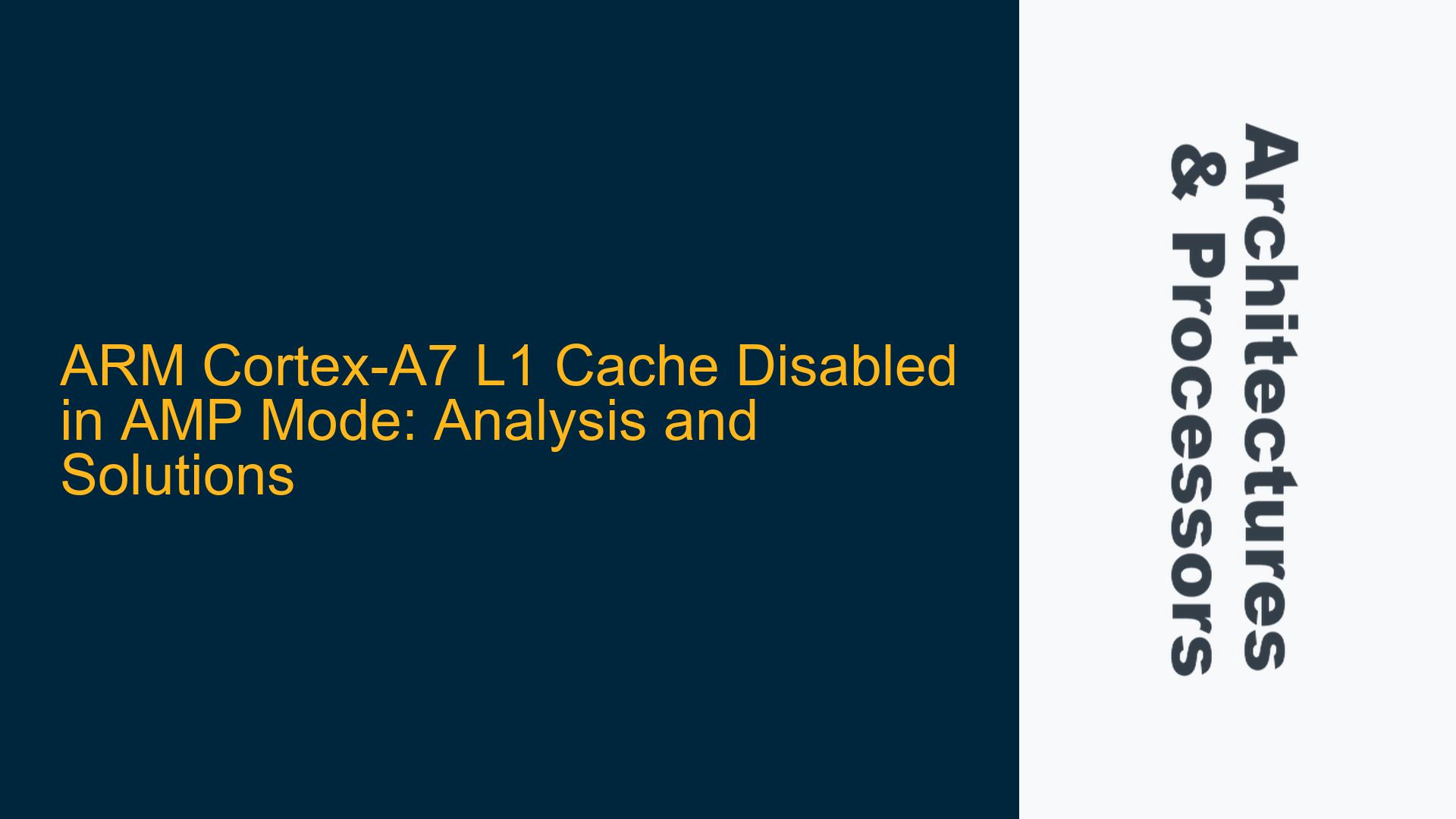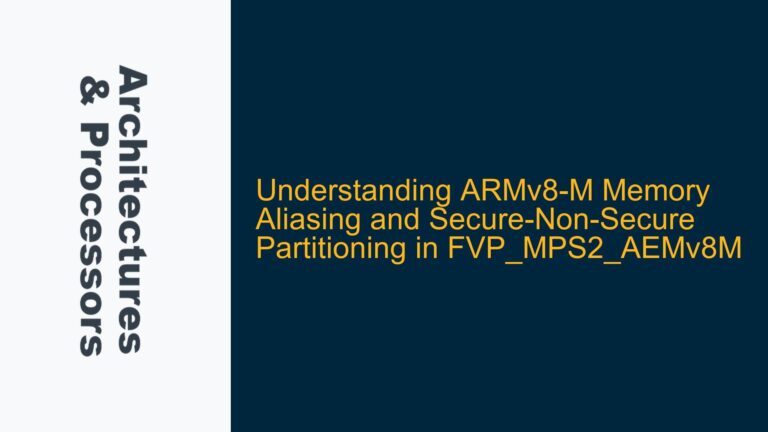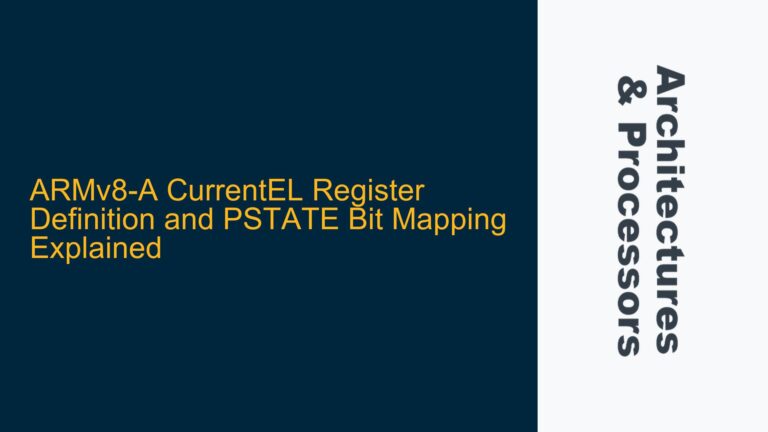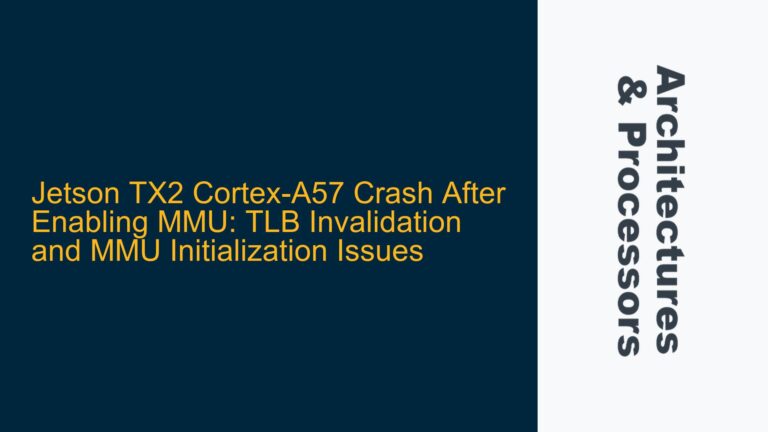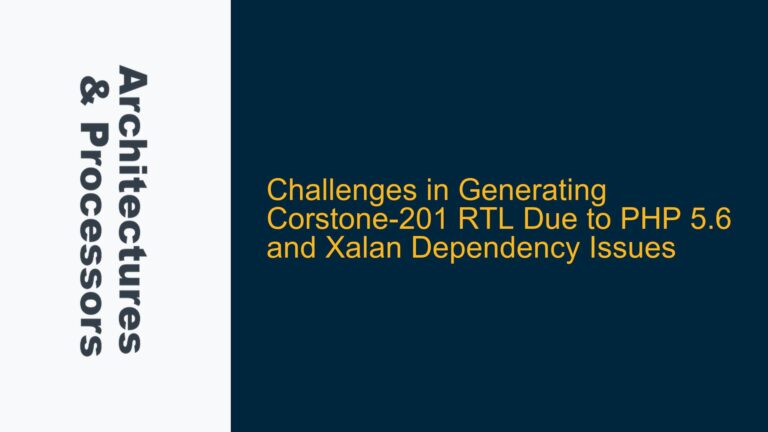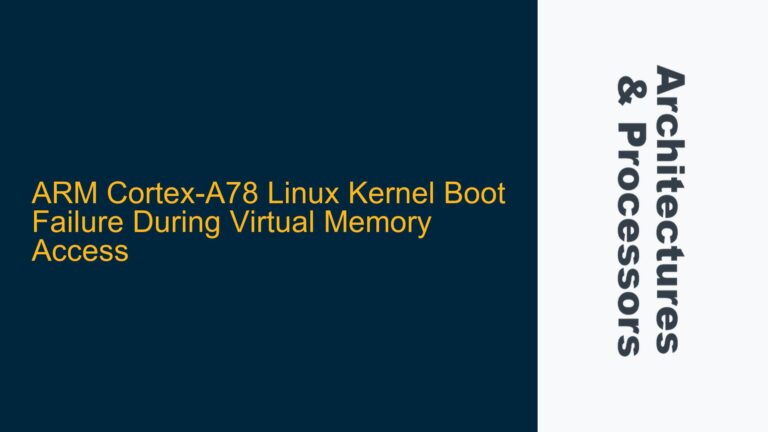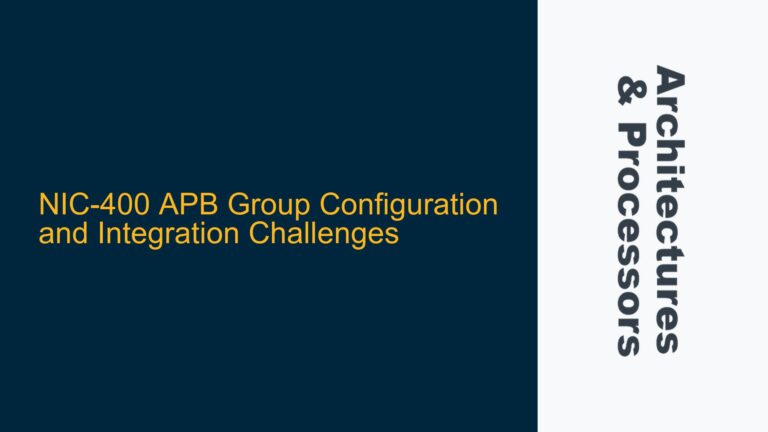Cortex-A7 L1 Data and Unified Cache Disablement in AMP Mode
The ARM Cortex-A7 processor, widely used in embedded systems for its balance of performance and power efficiency, exhibits a unique behavior when operating in Asymmetric Multiprocessing (AMP) mode. Specifically, when the SMP (Symmetric Multiprocessing) bit in the ACTLR (Auxiliary Control Register) is cleared to enable AMP mode, the L1 data cache and unified cache are forcibly disabled, regardless of the cache enable bits in the SCTLR (System Control Register). This behavior is explicitly documented in the Cortex-A7 MPCore Technical Reference Manual (TRM) under the description of the SCTLR.C bit, which states: "The caches are disabled when ACTLR.SMP is set to 0, regardless of the value of the cache enable bit."
This behavior is unusual compared to other ARM cores, where disabling SMP typically only affects cache coherency protocols rather than outright disabling the caches. The Cortex-A7’s design choice to disable caches in AMP mode has significant implications for system performance, particularly in scenarios where AMP mode is required for functional or architectural reasons. For example, in systems where multiple operating systems or bare-metal applications run on separate cores without shared memory or cache coherency requirements, the loss of L1 cache functionality can lead to substantial performance degradation.
The root of this behavior lies in the Cortex-A7’s architectural design, which tightly couples cache functionality with the SMP coherency protocol. When SMP is disabled, the processor assumes that cache coherency cannot be maintained across cores, and as a safety measure, it disables the L1 data and unified caches entirely. This design choice ensures that no stale or inconsistent data is accessed in a non-coherent system but comes at the cost of reduced performance.
ACTLR.SMP Bit and Cache Coherency Protocol Implications
The ACTLR.SMP bit plays a pivotal role in determining the cache behavior of the Cortex-A7 processor. When the SMP bit is set to 1 (enabling SMP mode), the processor assumes that all cores share a coherent view of memory, and the cache coherency protocol is activated to maintain consistency across L1 caches. In this mode, the L1 data and unified caches operate normally, and the cache enable bits in the SCTLR (M, C, and I) control their functionality.
However, when the SMP bit is cleared to 0 (enabling AMP mode), the Cortex-A7 disables the cache coherency protocol entirely. This means that each core operates independently, and no mechanism exists to ensure that data in one core’s L1 cache is consistent with data in another core’s L1 cache. To prevent potential data corruption or inconsistency, the Cortex-A7 disables the L1 data and unified caches altogether in this mode. This behavior is explicitly enforced by the hardware, overriding any attempts to enable the caches via the SCTLR.
The implications of this design choice are significant. In AMP mode, the Cortex-A7 effectively operates without L1 caches, relying solely on the L2 cache (if present) and main memory for data storage and retrieval. This can lead to increased memory latency and reduced performance, particularly for workloads that are heavily dependent on L1 cache access. Additionally, the lack of L1 cache functionality can complicate software design, as developers must account for the absence of caching when implementing memory access patterns and optimizations.
Enabling L1 Cache Functionality in AMP Mode: Workarounds and Best Practices
While the Cortex-A7’s behavior of disabling L1 caches in AMP mode is a hardware limitation, there are several strategies to mitigate its impact and achieve acceptable performance in AMP-based systems. These strategies range from software-based workarounds to architectural considerations and system-level optimizations.
1. Leveraging L2 Cache and Memory Access Optimizations
In the absence of L1 caches, the L2 cache (if available) becomes the primary cache level for data storage and retrieval. To maximize performance, developers should optimize their software to take full advantage of the L2 cache. This includes:
- Minimizing cache misses by organizing data structures to fit within the L2 cache line size.
- Using prefetching techniques to load data into the L2 cache before it is needed.
- Aligning data structures to cache line boundaries to avoid unnecessary cache line fills.
Additionally, memory access patterns should be optimized to reduce latency. This can be achieved by:
- Grouping related data together to improve spatial locality.
- Avoiding random or scattered memory accesses that can lead to frequent cache misses.
- Using DMA (Direct Memory Access) engines to offload memory-intensive tasks and reduce CPU overhead.
2. Implementing Software-Managed Cache Coherency
In AMP mode, the lack of hardware-enforced cache coherency requires developers to implement software-managed coherency mechanisms if shared memory is used between cores. This can be achieved through:
- Explicit cache maintenance operations, such as cleaning and invalidating cache lines, to ensure data consistency.
- Using memory barriers to enforce ordering constraints and prevent race conditions.
- Implementing shared memory protocols that rely on software-based synchronization primitives, such as spinlocks or semaphores.
While software-managed coherency introduces additional complexity, it allows for fine-grained control over cache behavior and can be tailored to the specific requirements of the application.
3. Revisiting System Architecture and Core Allocation
In some cases, the need for AMP mode may be reconsidered in favor of SMP mode, particularly if the performance impact of disabled L1 caches is unacceptable. If SMP mode is not feasible, alternative approaches include:
- Allocating cores to tasks that are less sensitive to cache performance, such as background or low-priority tasks.
- Using heterogeneous architectures that combine Cortex-A7 cores with other processor types (e.g., Cortex-M series) to offload tasks that do not require L1 cache functionality.
- Partitioning the system into multiple AMP domains, each with its own memory and cache resources, to minimize cross-core dependencies.
4. Utilizing Cortex-A7-Specific Features and Workarounds
The Cortex-A7 provides several features that can be leveraged to mitigate the impact of disabled L1 caches:
- The use of TCM (Tightly Coupled Memory) as a low-latency alternative to L1 cache for critical data and code.
- Configuring the MMU (Memory Management Unit) to optimize memory access patterns and reduce latency.
- Exploiting the Cortex-A7’s power-saving features to compensate for increased memory access energy consumption.
5. Engaging with ARM for Clarifications and Updates
Given the unusual nature of the Cortex-A7’s cache behavior in AMP mode, developers are encouraged to engage with ARM for further clarifications and potential updates. ARM may provide additional guidance, errata, or firmware updates that address this behavior or offer alternative solutions.
In conclusion, while the Cortex-A7’s disabling of L1 caches in AMP mode presents a significant challenge, careful system design and optimization can mitigate its impact. By leveraging L2 cache, implementing software-managed coherency, and revisiting system architecture, developers can achieve acceptable performance in AMP-based systems. Additionally, ongoing engagement with ARM and the broader developer community can provide further insights and solutions to this unique architectural behavior.
